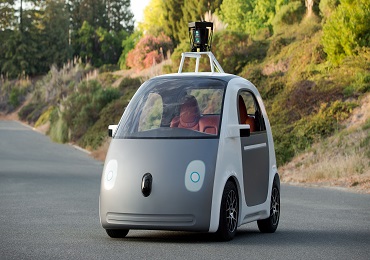Each year about 33,000 people in the United States (U.S) die in a car accident. Around the world, that number shoots up to about 1.2 million people.
Overwhelmingly, the vast majority of these accidents are preventable. The problem, in large part, is human error.
Technology companies and automakers alike are trying to end these unnecessary deaths with self-driving cars. The bet is autonomous vehicles decked with sensors and cameras simply have more data about the car’s environment than humans, therefore, the computer can more quickly respond to potential dangers.
But while all the major car companies are investing in this technology, the fact remains that there are a number of hurdles to be addressed before fully autonomous cars can hit the streets in any meaningful way in the U.S.
Most automakers and industry experts estimate these vehicles will be on the road closer to 2030. However, technology does already exist that can make cars a lot safer.
According to the National Highway Traffic Safety Administration, 80 per cent of all accidents occur because of some kind of distraction that happens three seconds before an incident.
To help prevent these kinds of accidents, you don’t need a fully autonomous vehicle, you just need better safety technology, Michael Backman, a general manager at Mobileye, a tech company that makes the software and tech that enables advanced safety systems, told Tech Insider.
“It’s amazing when you think about it that we allow people to perish at this rate in this country and also around the whole world. It’s terrible that this happens and we have the technology to change that right now,” Backman said.
Instead of waiting years for the regulations and technology to be fully developed for fully autonomous vehicles, automakers should already be implementing semi-autonomous systems that help make vehicles safer now.
By 2020, almost every major car company plans to have a vehicle with self-driving features— like autonomous driving for the highway, self-braking, and self-parking—available for sale.
In fact, in September, 10 major car companies — including Audi, BMW, Ford, General Motors, and Tesla — agreed to make automatic braking a standard feature in their vehicles. This kind of safety technology could help prevent or cut as many as 1,700 deaths caused by rear-end collisions each year.
BMW’s all-electric i3 can already park itself and Tesla recently rolled out its latest autopilot features, which enables highway autosteer and parallel autopark, as part of a beta program.
But new cars aren’t the only vehicles getting safer. Consumers and companies are also beginning to retrofit their dumb cars with smart car tech that helps them avoid accidents.
Mobileye, which provides its technology to auto suppliers and manufacturers, powers 85% of cars with collision avoidance or some kind of driving assistance systems, Backman said. The company’s software communicates with sensors and cameras placed on a car to help warn drivers of possible hazards and to power self-driving functions.
Tesla, General Motors, Ford, Chrysler, Audi, and BMW are just a few of the companies that use the company’s technology.
MobileyeYouTube/MobileyeMobileye’s technology uses a camera-based system to sense what is around it.
But Mobileye has another part of its business that uses its technology to basically make dumb cars a lot safer. The product, called Mobileye 5 Series, is a camera-based computer system that attaches to the dashboard to alert the driver to all kinds of hazards.
For example, the camera in the system can read speed limits, so it will alert the driver by beeping when they are speeding. It will do the same if the driver is veering out of their lane, tailgating, or if it detects that the vehicle might be on a collision course with a pedestrian or another object.
The system begins its warning sound up to about three seconds before it detects a potential threat.
While the system is available to consumers, companies have adopted the product in a big way for their company fleets because it saves them money.
“If a company wants to introduce safety technology into their fleet, they have to wait 15 years to buy all new trucks, so the idea of retrofitting vehicles with this device is very attractive,” Backman said.
The technology also helps reduce accidents, which means less insurance claims for companies to pay out, Backman said.
“What we see is very shortly after these are installed in fleets, everyone starts driving safer and then what happens very quickly after that is the accident rate gets reduced,” he said. “Their chargeable accidents go down by 50 per cent and their accidents across the whole board go down by 25 per cent.”
While Mobileye is betting on self-driving cars in the long-term, advanced driving automobile systems in cars like semi-autonomous functions will be the thing that saves the most lives in the interim, Backman said.
“This is just one example of technology that will one day be ubiquitous and every car will have it. But we are at the early stage adoption. We are at the early edge of widespread adoption, but it’s inevitable because the facts are there,” Backman said.


Leave a Reply